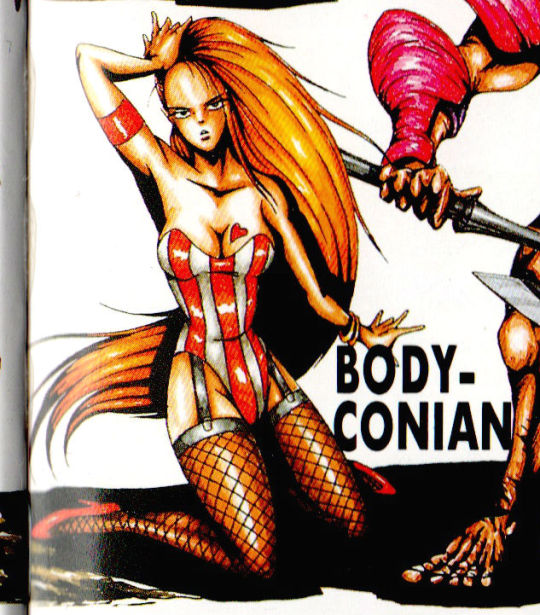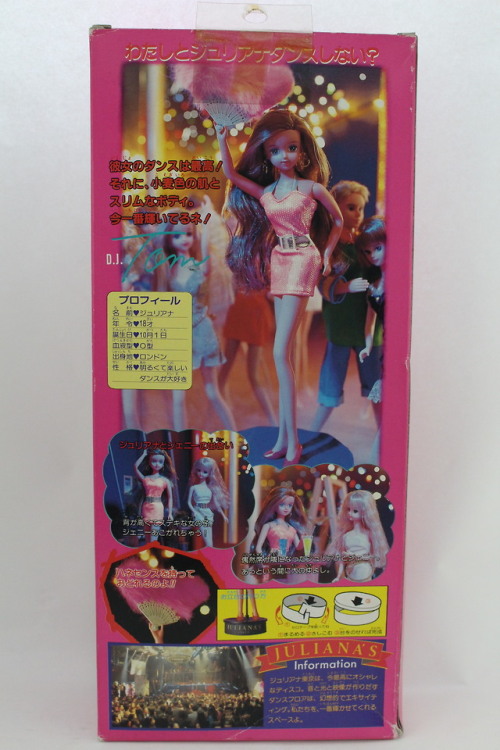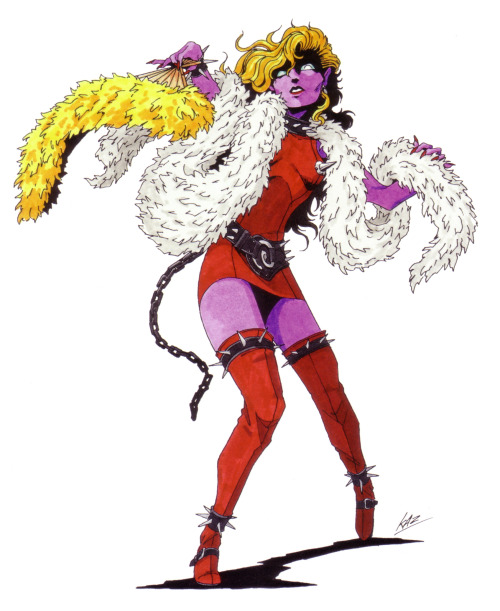#julianas tokyo
Official JULIANA’S TOKYO doll, from the Jenny line of dolls by TAKARA in 1994.
Included is the iconic feather fan, a really cute stand and little pound bills that were used in the club as drink tickets.
If you answered the questionnaire included, you could have won an official, real feather fan.
Pics by foundinjapan.com
Post link
KANEKO’S CRIB NOTES XXVI: BODYCONIAN
TheBodyconiansare one of the more peculiar demon types from Shin Megami Tensei and Shin Megami Tensei II, as they seem to represent more than what they’re leading on. They also appear inextricably tied to the era they originated from. Zombie women in short, one-piece dresses who dance crazy? If it seems dated, it’s because it definitely is–precisely dated, in fact.
To get to the bottom of what the Bodyconians represent, we need to return back to the late 80s, in the years preceding the burst of the Japanese economic bubble. Around this time, French fashion house Hervé Leger introduced a new type of revealing dress, dubbed the “bodycon,” short for “body-conscious.” Indeed, this is the very skin-tight dress worn by Kaneko’s Bodyconians, who derive their names from it. The provocative nature of the bodycon and its wearers garnered enough attention during this period that the Bodyconians would actually first appear in 1990′s Megami Tensei II:

But there’s more to the Bodyconian lifestyle than just a dress. On May 15, 1991, Tokyo’s nightlife was hit with a seismic shock: the opening of Juliana’s Tokyo, a discotheque in the city’s Minato ward. Replete with all the laser lights and smoky atmosphere you’d expect from a quality dance club, Juliana’s played non-stop, DJ-hosted dance music, like this mix, which begins with the truly evocative song “Yum Yum” (warning: hilariously explicit lyrics). By all accounts, crowds flocked to the club–and so did the bodyconians, many of whom were normal “office ladies” by day, who danced free of inhibitions in their transformative dresses by night. (One particularly notable Juliana’s patron is Kumiko Araki, pictured above.) Particularly iconic of Juliana’s bodyconians was augmenting their style with feather fans and boas, two accessories also seen on Kaneko’s SMTII Bodyconian.
Unfortunately for the bodyconians, Juliana’s time on the Tokyo stage was short: the club played its last set on August 31, 1994. This video purports to be from Juliana’s last day. However, Juliana’s revivals seem to happen on a regular basis, attended by some of the original bodyconians. Similar to SMT’s own Bodyconians, the instinctual desire to dance until daybreak must be difficult to abandon.
Post link









